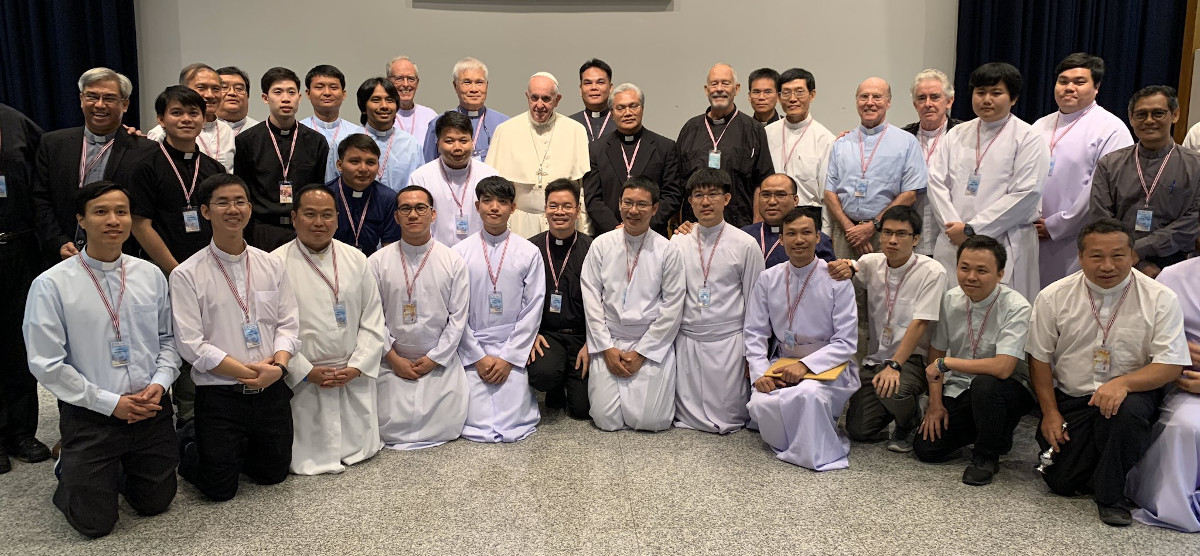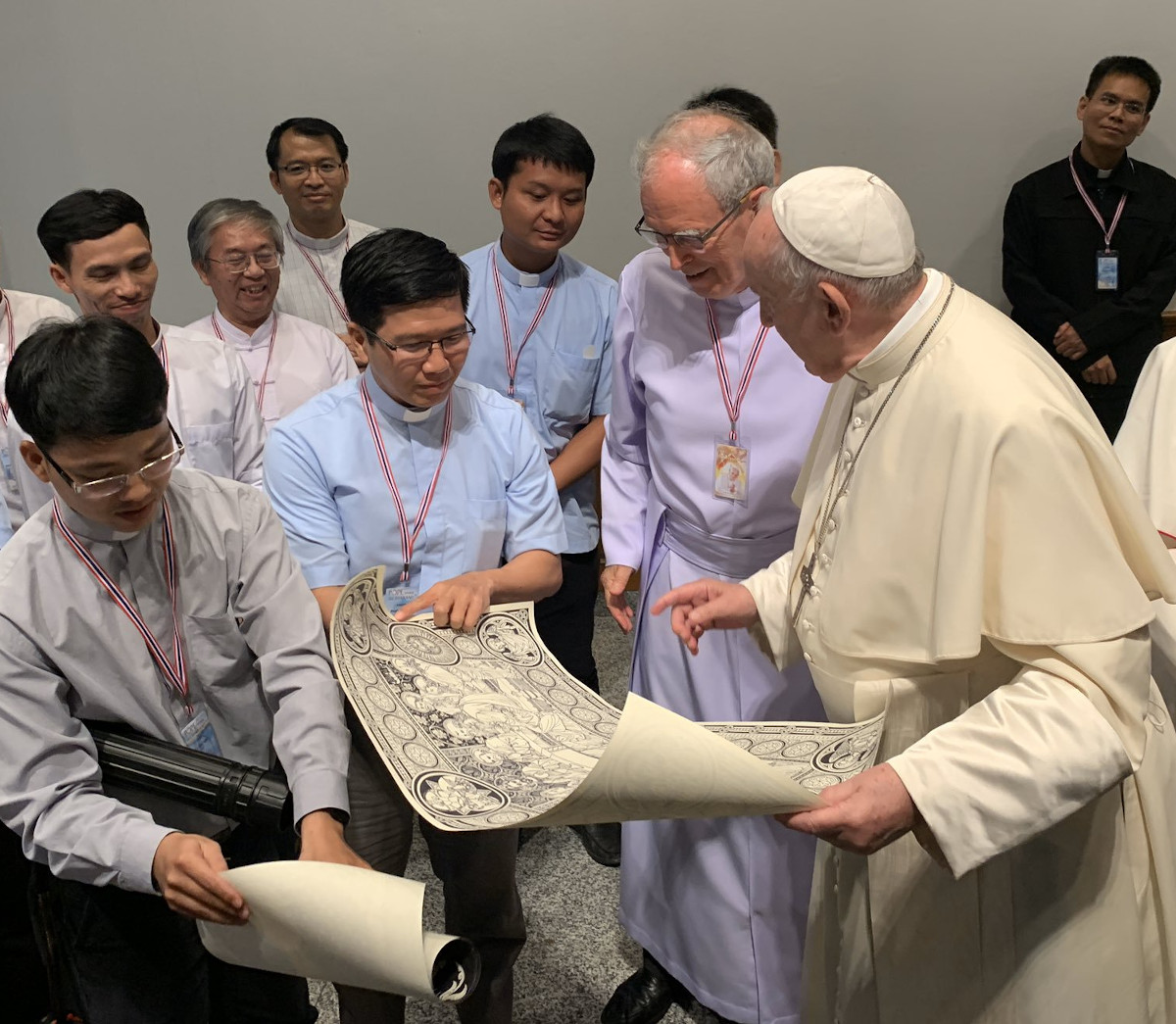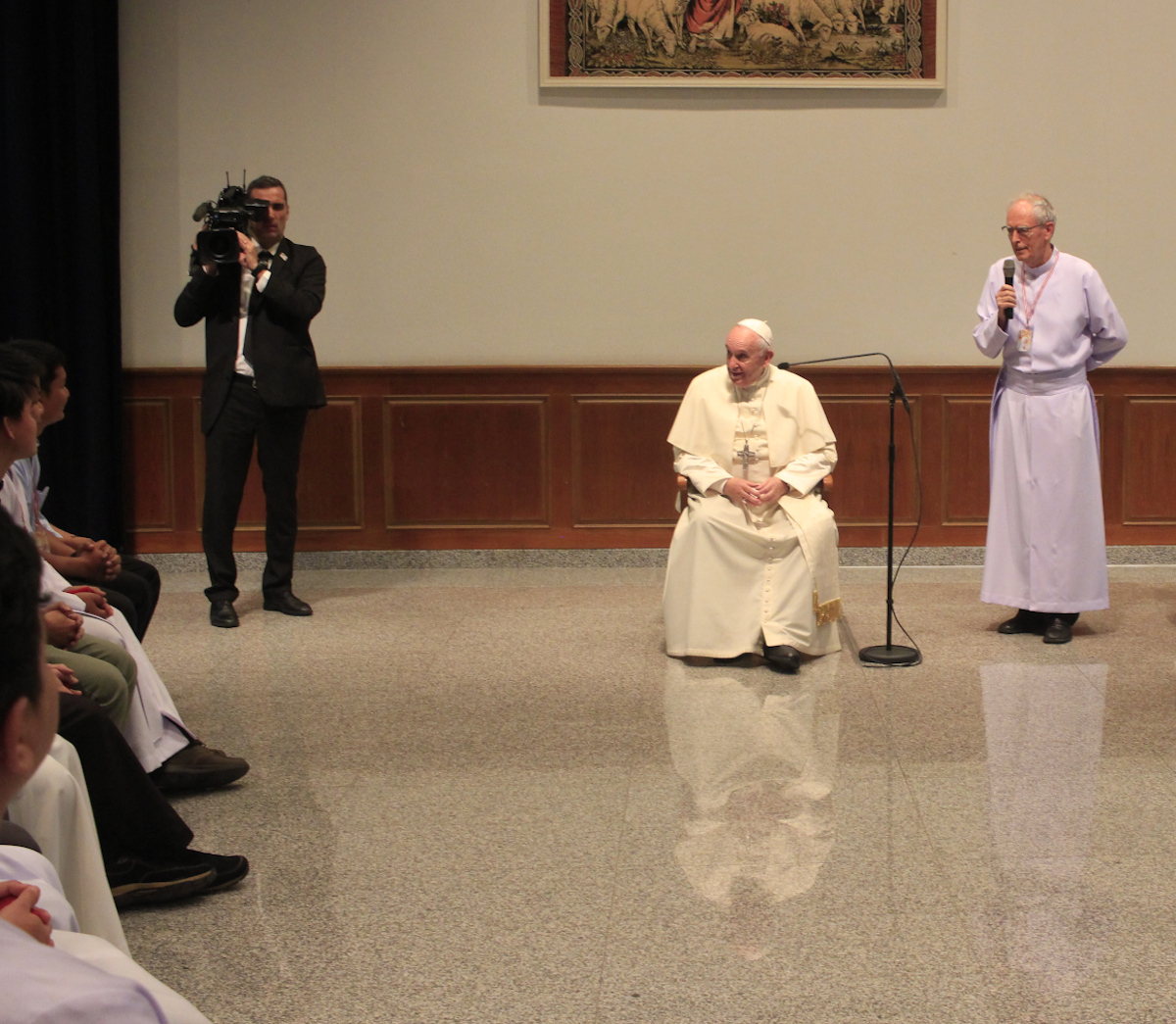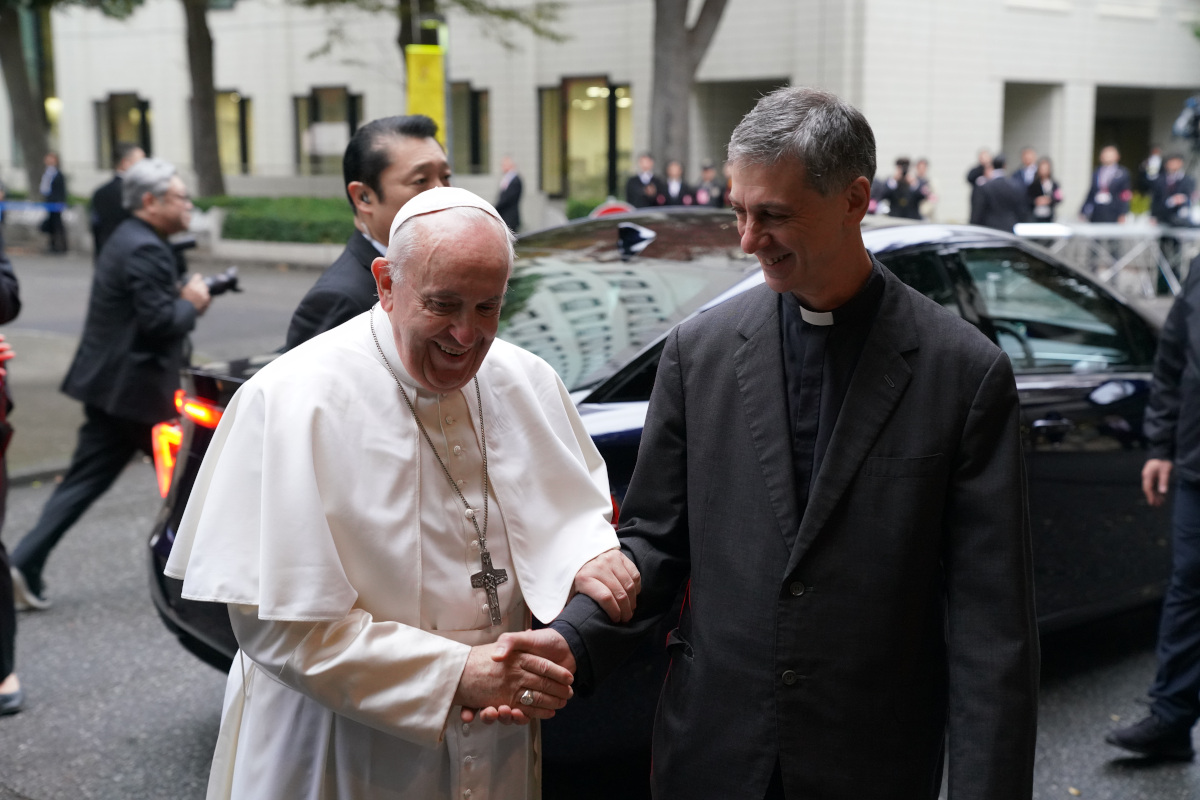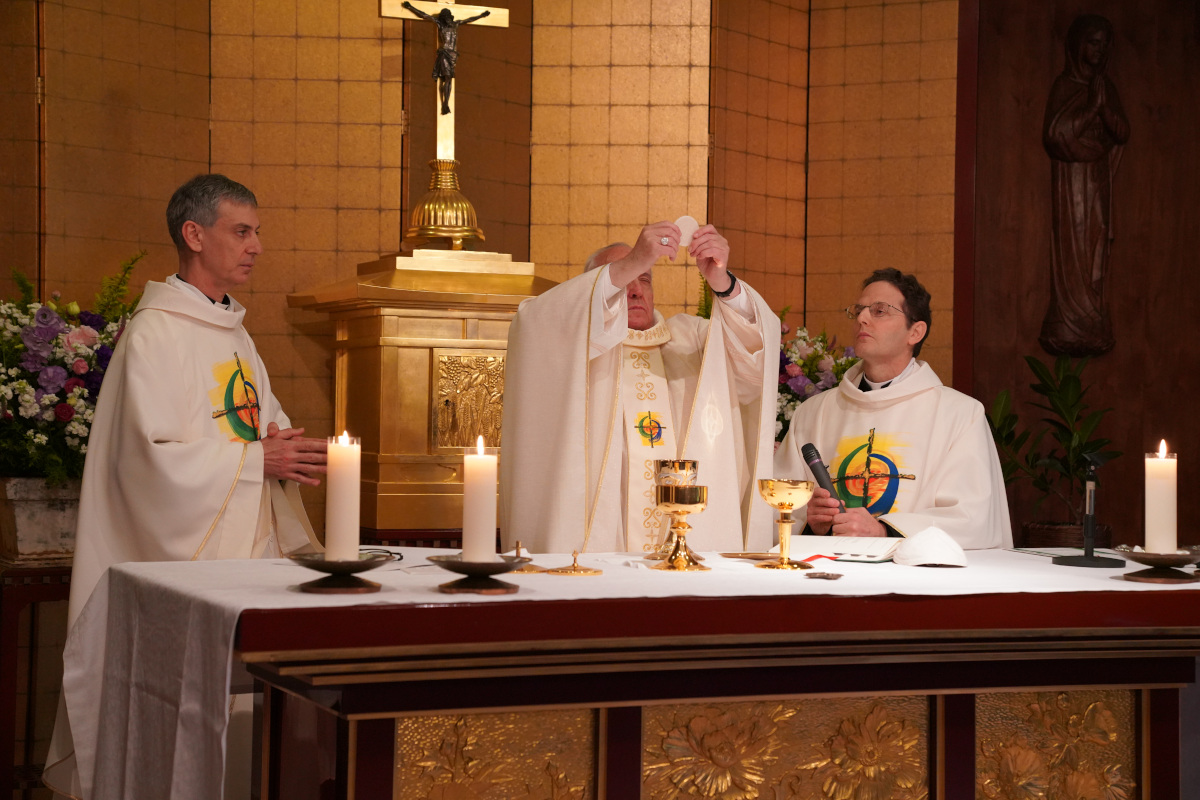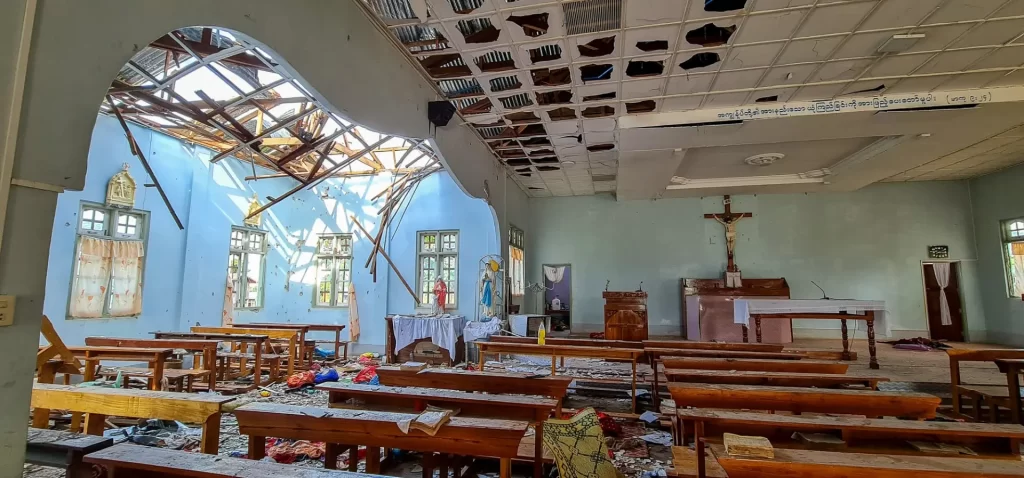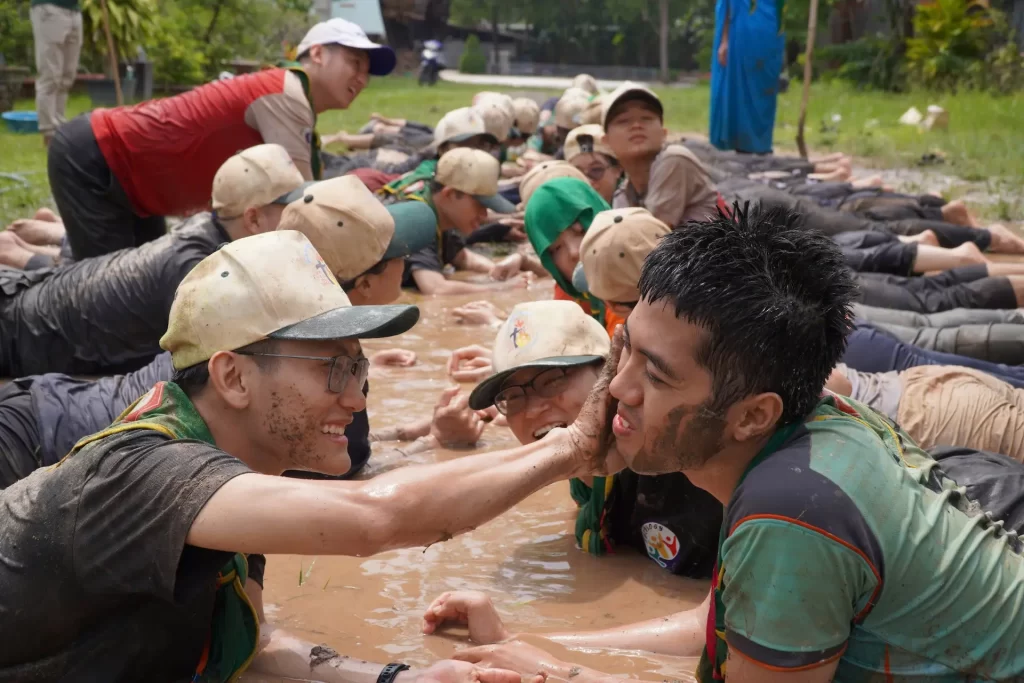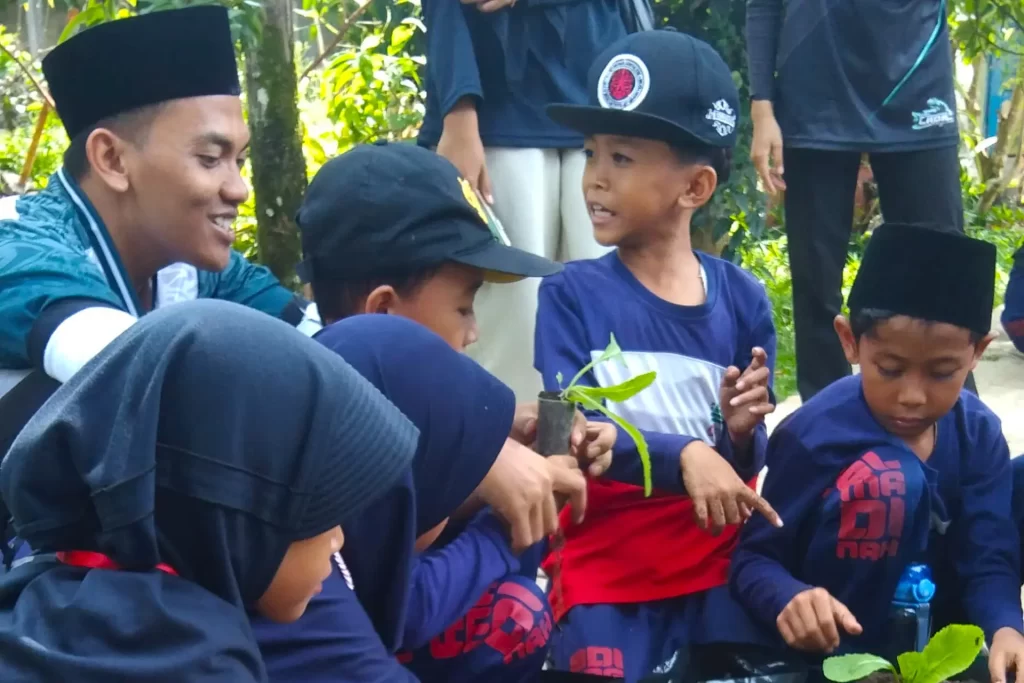Pope Francis made his 32nd foreign Apostolic Journey to two Asian countries, Thailand and Japan, in November 2019. He landed in Bangkok on November 20, welcomed with sunshine, a 21-gun salute, representatives from the Royal Council and the Thai government, and 11 children from the different dioceses of Thailand. (The Vatican established the Apostolic Vicariate of Siam in 1669; the 350th anniversary was marked by the Pope’s visit.) In Bangkok, Pope Francis received a state welcome from the Thai Prime Minister Prayuth Chan-och. He also met with the Supreme Buddhist Patriarch, Somdej Phra Maha Muneewong, at the Wat Ratchabophit Sathit Maha Simaram Temple where he dutifully removed his black shoes before entering. The visit to King Rama X was private; later a crowd of 50,000 turned up at the Supachalasai National Stadium for the Mass. Young people chanted “Viva Il Papa” as Pope Francis drove by in the designated Popemobile: a locally made white Nissan pickup truck. The Pope was accompanied everywhere by his translator Sr Ana Rosa Sivori, a Salesian missionary who had long been living in Thailand, also his second cousin.
On November 22, in between visits and speeches, Pope Francis met with the Jesuits working in Thailand. The interaction was informal: he shook hands and answered questions for over half an hour. It was an intimate gathering for a small group with few cameras allowed. The warmth and rapport between Pope Francis and his brother Jesuits are palpable in the few images collected here.
By November 24, Pope Francis had arrived in Japan where, as a young Jesuit, he had dreamed of going as a missionary. On a rainy day in Nagasaki, the sun came out for the Mass. “I have very much looked forward to this moment,” said Pope Francis during his greeting on Nishizaka Hill, where he remembered the 26 Japanese martyr saints. “For here the light of the Gospel shone forth in the love that triumphed over persecution and the sword.” In Hiroshima, the city decimated by the atomic bomb during World War II, Pope Francis visited the Peace Memorial, where his message called for peace and non-violence: “A true peace can only be an unarmed peace.” In the fast-paced city of Tokyo, his schedule was packed. Pope Francis met with disaster survivors, called on Emperor Naruhito at the Imperial Palace, met the youth at St Mary’s Cathedral, celebrated Mass at the Tokyo Dome with fifty-five thousand people, visited the Japanese Prime Minister Shinzo Abe, and addressed authorities and diplomats.
Finally, on his last day in Tokyo, Pope Francis visited Sophia University, established in 1913 by the Jesuits. The Pope celebrated Mass at the Jesuit House with two Argentine Jesuits concelebrating, Japan Jesuit Provincial Fr Renzo de Luca SJ and Rector Fr Juan Haidar SJ. He spent time with the sick and elderly Jesuits, including former Jesuit Superior General Fr Adolfo Nicolás SJ, and had breakfast with the community–who thoughtfully prepared dulce de leche–a traditional Argentine treat for Pope Francis. Before returning to Rome, Pope Francis met with Sophia University students, and said, “This university should be a centre not only of intellectual formation but also a place where a better society and more hope-filled future can be shaped.” The audience that day was mostly non-Catholic–much like the population of Japan–but as his apostolic journey progressed it was evident that even non-Catholics were touched by the presence of Pope Francis, consoled by his message of mercy, peace, and hope.

